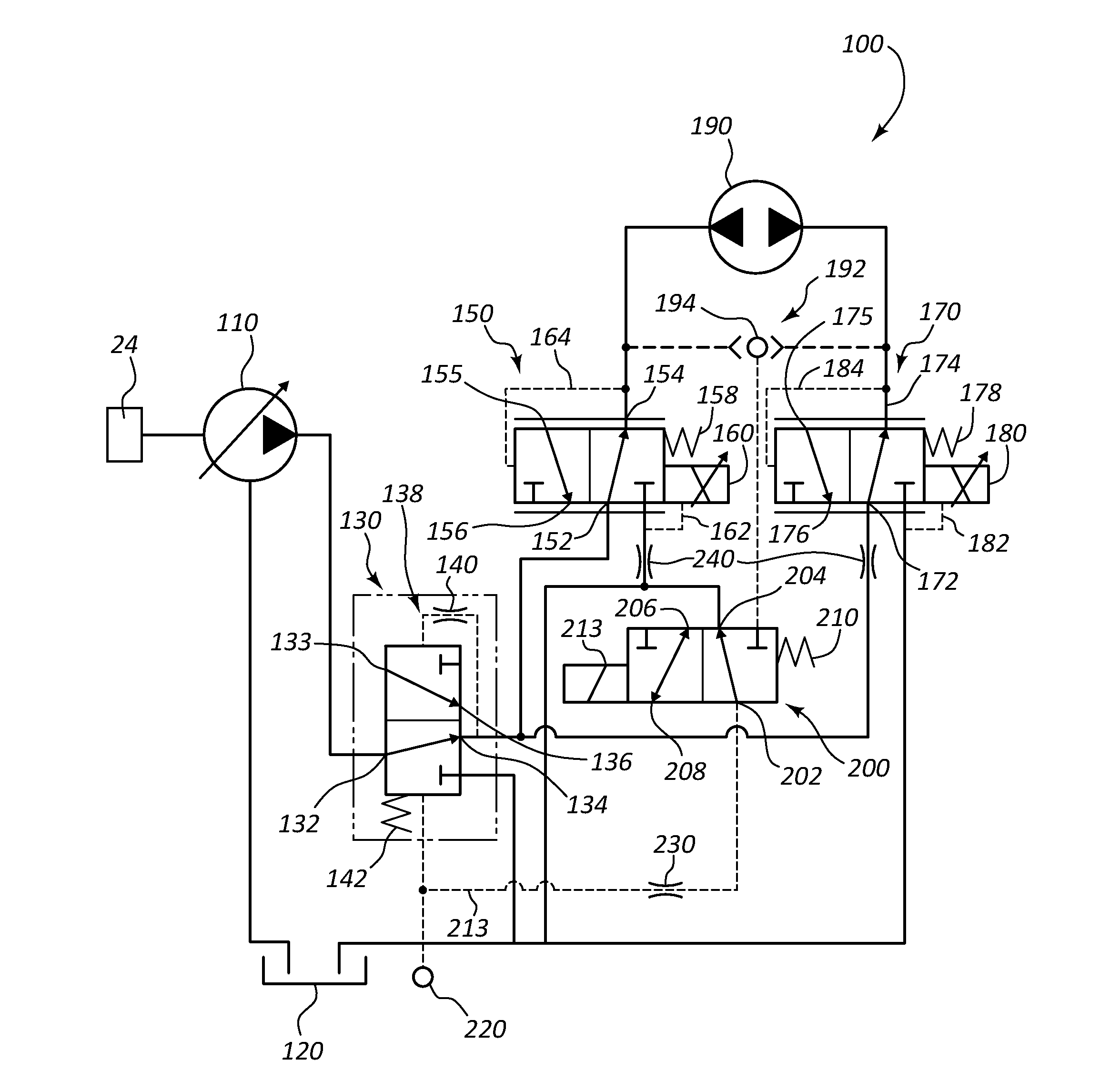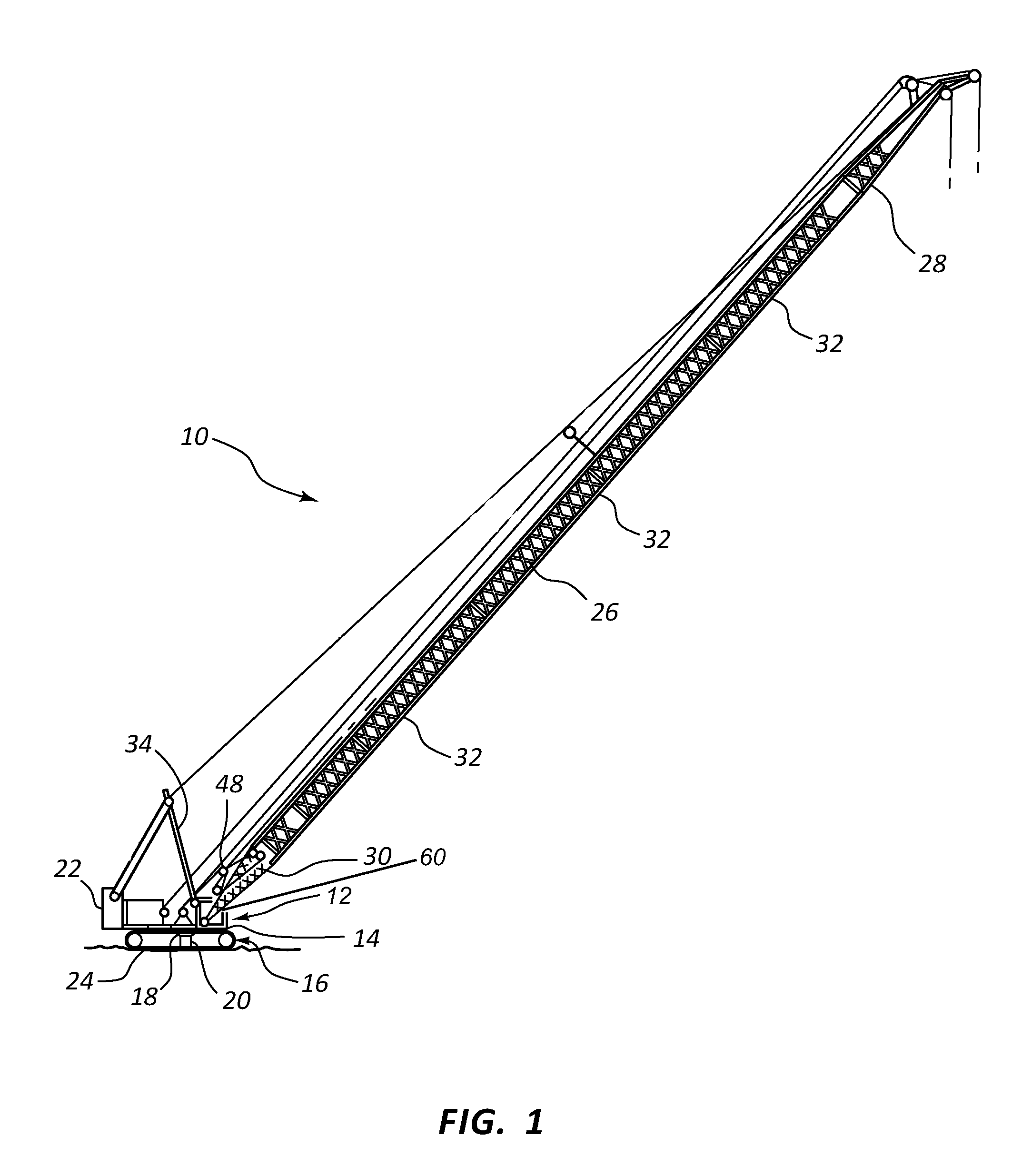Electronically controlled hydraulic swing system
a swing system and electric control technology, applied in soil shifting machines/dredgers, mechanical equipment, servomotors, etc., can solve the problems of high cost of specialized spool valves, inability to provide off-the-shelf spool valves, and difficulty in adjusting the actuation signal, so as to increase and decrease the magnitude of actuation signalt, increase and decrease the effect of actuation signal
- Summary
- Abstract
- Description
- Claims
- Application Information
AI Technical Summary
Benefits of technology
Problems solved by technology
Method used
Image
Examples
Embodiment Construction
[0031]The present invention will now be further described. In the following passages, different aspects of the embodiments of the invention are defined in more detail. Each aspect so defined may be combined with any other aspect or aspects unless clearly indicated to the contrary. In particular, any feature indicated as being preferred or advantageous may be combined with any other feature or features indicated as being preferred or advantageous.
[0032]In addition, the figures illustrate various hydraulic circuits in the standard representational format. The physical embodiment might appear much different than the representational format, but the relevant positions and connections in the physical embodiment will reflect those in the figures. For example, it may be said that a pressure sensor is connected to an outlet. One of skill in the art will understand that in the physical embodiment the connection is a hydraulic connection. The sensor and the outlet may be, but not necessarily,...
PUM
 Login to View More
Login to View More Abstract
Description
Claims
Application Information
 Login to View More
Login to View More - R&D
- Intellectual Property
- Life Sciences
- Materials
- Tech Scout
- Unparalleled Data Quality
- Higher Quality Content
- 60% Fewer Hallucinations
Browse by: Latest US Patents, China's latest patents, Technical Efficacy Thesaurus, Application Domain, Technology Topic, Popular Technical Reports.
© 2025 PatSnap. All rights reserved.Legal|Privacy policy|Modern Slavery Act Transparency Statement|Sitemap|About US| Contact US: help@patsnap.com



